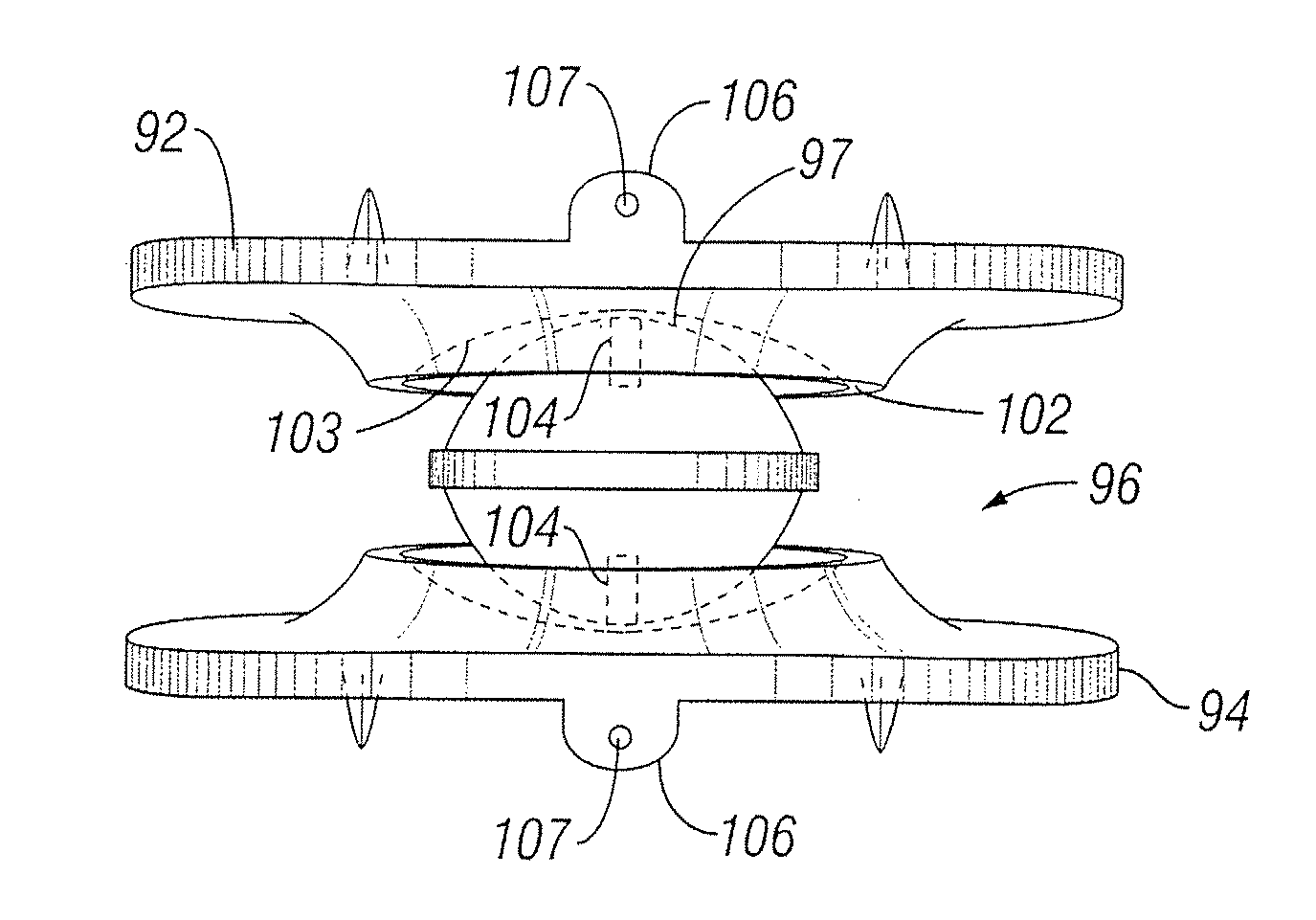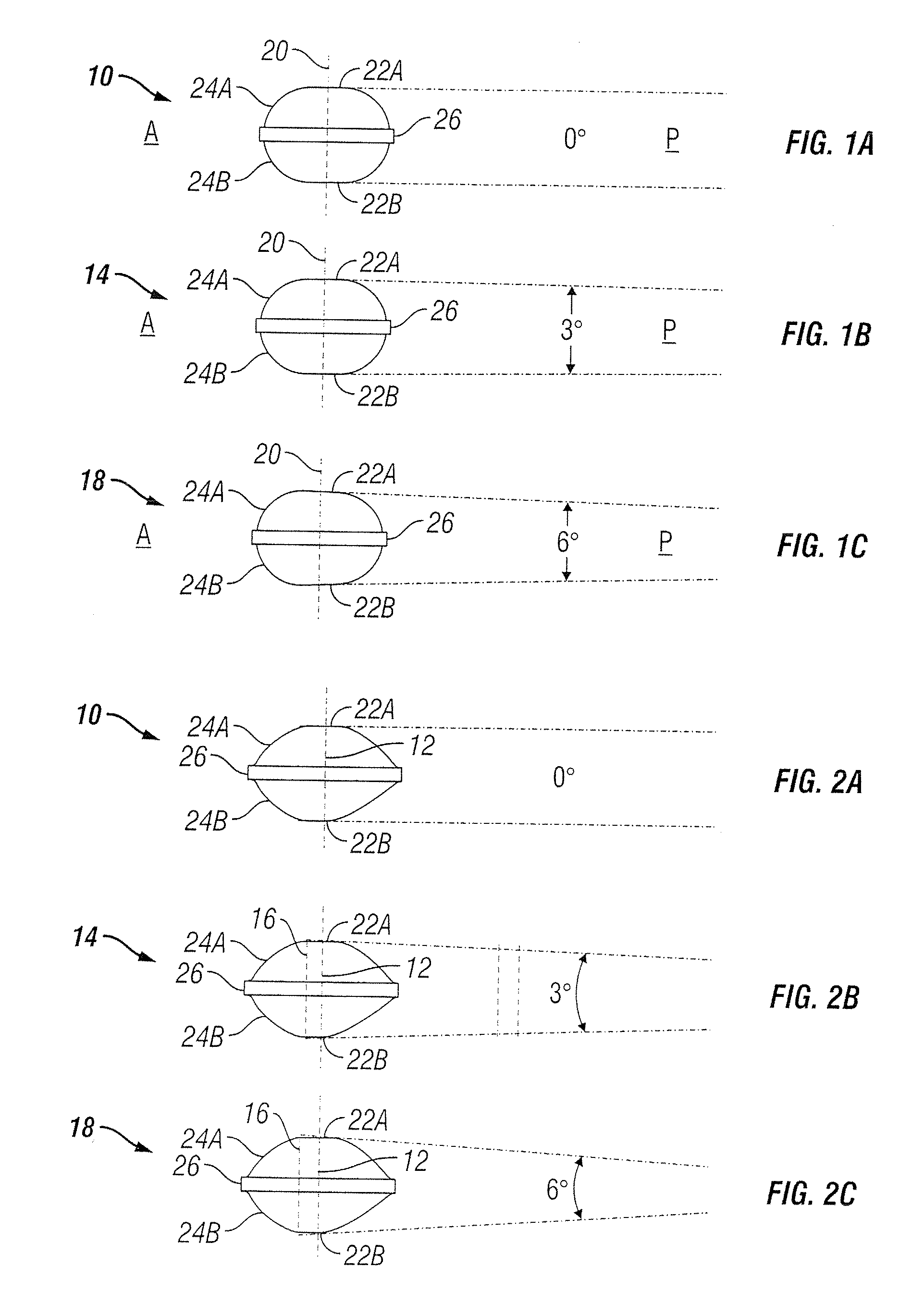Artificial Spinal Disc
a technology of artificial discs and discs, applied in the field of disc disease and spinal deformities with artificial disc replacement, can solve the problems of not being able to correct the underlying deformity of the spine, not being able to routinely provide wedge-shaped end plates, and simply changing the angle of insertion is not enough to compensate for a device that does. , to achieve the effect of preventing posterior migration (expulsion) and preventing a hard stop
- Summary
- Abstract
- Description
- Claims
- Application Information
AI Technical Summary
Benefits of technology
Problems solved by technology
Method used
Image
Examples
Embodiment Construction
[0092]In its proper, healthy alignment, the spine follows natural curves, which promote proper sagittal and coronal balance (flexibility) and allow for balanced load sharing between the vertebrae. These curves include the cervical, thoracic, lumbar and sacral regions of the spine. Naturally, in order to accommodate a curve, there must be some variation in the angle of articulation between the functional spinal units and the height of an intradiscal space. The cervical and lumbar regions are naturally lordotic, or curved convexly in the anterior direction. At different segments along the spine, there are typically different heights for the vertebral bodies and the intradiscal space. In addition, the intradiscal space and vertebral body height may be different for different people.
[0093]Each intradiscal space has anterior and posterior regions. An artificial disc in the cervical, thoracic and lumbar regions that maintain the same height from the anterior to the posterior may promote a...
PUM
| Property | Measurement | Unit |
|---|---|---|
| angle | aaaaa | aaaaa |
| angle | aaaaa | aaaaa |
| heights | aaaaa | aaaaa |
Abstract
Description
Claims
Application Information
 Login to View More
Login to View More - R&D
- Intellectual Property
- Life Sciences
- Materials
- Tech Scout
- Unparalleled Data Quality
- Higher Quality Content
- 60% Fewer Hallucinations
Browse by: Latest US Patents, China's latest patents, Technical Efficacy Thesaurus, Application Domain, Technology Topic, Popular Technical Reports.
© 2025 PatSnap. All rights reserved.Legal|Privacy policy|Modern Slavery Act Transparency Statement|Sitemap|About US| Contact US: help@patsnap.com



